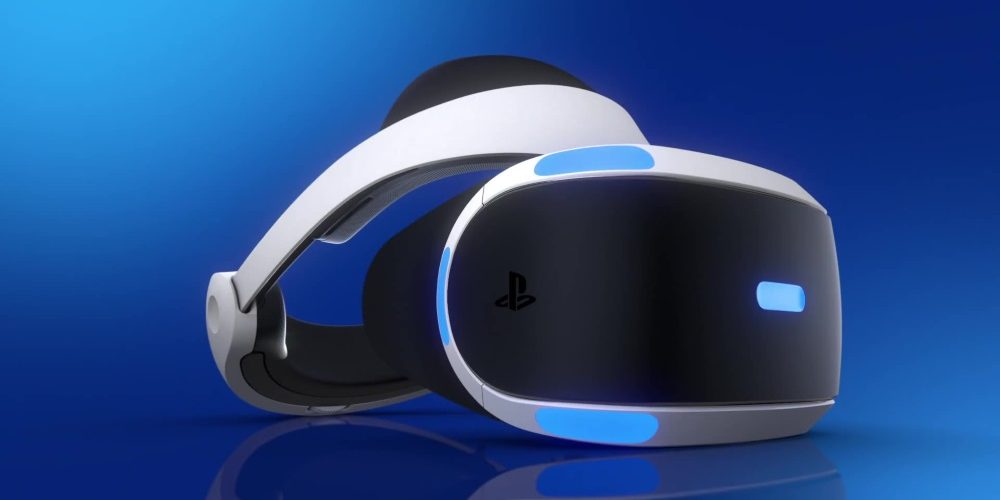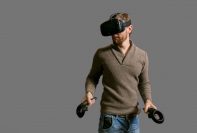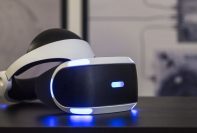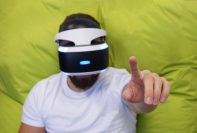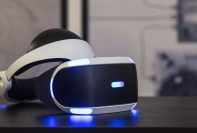Ever since PC games were first introduced, many people have imagined being a part of the game by stepping inside it.
With many recent technological developments, things that were only imagined, have now become a reality.
The intense competition in the market has been beneficial for consumers since there are many good options at affordable prices.
If you are an avid gamer, you have probably heard about Visual Reality gaming (VR gaming) in the media.
The Oculus Rift and the HTC Vive took the lead, with the PlayStation VR following close behind.
While the Oculus Rift and the HTC Vive successfully entered the VR gaming market before PlayStation VR, the latter has offered an excellent, affordable package that is sure to attract many buyers.
This article will discuss the PlayStation VR and will compare it with its market rivals.
We assure you that by the end of this article, you will know whether or not PSVR is for you.
What is PlayStation VR?
PlayStation VR is a VR gaming system that enables the user to enjoy PlayStation games that are specifically developed in the VR mode.
It is the only option available to console game lovers that allows them to enjoy a VR experience.
The PlayStation VR allows you to turn your dreams of being the part of the game you are playing into reality.
You can experience being inside the three-dimensional virtual worlds and can even interact with the surroundings in that environment.
Cool, right?
Even cooler is the fact that you can enjoy an immersive environment, while comfortably staying indoors.
All you need to do is plug your PlayStation VR kit into your PlayStation4 console and let the magic begin.
PlayStation is the most popular series of gaming consoles among the young generation.
Almost every teenager has had hands-on experience with it.
This gives it an added advantage over other gaming VR systems.
Many homes already have the Playstaion4 console. All you need to invest in is a PSVR set.
However, the PSVR Move and Camera are sold separately.
The other two big names on the market cost are much more expensive.
There is a high cost for the VR set alone, plus a high-end PC system to enjoy a complete VR experience.
Therefore, by comparison, PSVR is very affordable.
If you already own a Playstation4, you only need to invest $200-$300 to get VR-ready.
According to a News report by the popular PlayStation news outlet PlayStation Lifestyle, the PSVR experienced a sales boom in 2018.
This trend is expected to continue in the future.
Sony is constantly trying to bring the best gaming VR experience to its users.
The price of the PSVR has declined steadily since its 2016 launch.
The PSVR is the cheapest at $299 with the HTC Vive and the Oculus Rift costing $599 and $399 respectively.
The consumer, however, must buy the PlayStation VR camera which costs $44.90.
Along with a pair of PlayStation Move controllers, this is still a good deal compared to the Vive and the Oculus Rift.
Sony has never competed with Oculus Rift or HTC Vive for the top spot in this particular line.
The hype has been created by consumers.
Therefore, Sony has not emphasized display quality and has placed more of an emphasis on developing original PlayStation VR content.
The HTC Vive and the Oculus Rift still must depend on third-party developers for their content development.
This makes them less competitive with Sony.
Now that we have introduced the PlayStation VR, we will talk about what PlayStation VR has to offer.
Setup and Installation
As soon as you open the box, there will be many cables.
However, this shouldn’t keep you from finishing the installation.
Other than the numerous cables, the box contains a PlayStation VR headset, a processor unit, an HDMI cable, a set of in-ear headphones, a lens cleaning cloth, a demo disc and an instruction manual.
The setup process is pretty straightforward.
The different parts of the VR system must be connected to each other through the cables.
This is not as complicated as it sounds.
Everything is clearly labeled to avoid any confusion.
The instruction manual developed by Sony makes the setup process easy for anyone.
A USB cable and an HDMI cable need to be connected from the PS4 unit into the processor unit, with one cable going from the processor into the VR headset.
The PlayStation Move controllers will also need to be charged from the PlayStation unit since they cannot be charged through the USB main adapter.
The disadvantage of this setup is that the USB cable and two controllers need in a total of three USB ports for charging, while the PS4 unit only has two of them.
This means that cable swapping may be needed.
This can be inconvenient if the system is being used in a place that has pets or children.
The cables may cause tripping.
The complete setup process takes approximately 30 minutes for an average person.
This is not that long since it is usually a one-time effort.
Headset
The PSVR headset is the most important part of the complete system since it comes in direct contact with the user.
It is the real show stealer.
It is stylish, as well as light and comfortable.
The headset looks like it is from a sci-fi movie.
The seven blue- colored tracking lights, the sleek white edging, and the black fascia make this headset look like an expensive piece of tech that anyone would be glad to put on.
The PSVR headset does not have adjustable Velcro straps, unlike typical headsets.
It comes with a cushioned plastic band with a plastic button at the back to extend it.
The user can put the headset over their head and it automatically adjusts to their size.
There is an additional plastic dial to tighten the headset if it is still too loose.
Through this design change, Sony has successfully shifted the weight of the headset off the face and towards the forehead.
When the user wears the headset, it doesn’t give a gripping feel.
The weight is instead shifted to the back of the head.
This makes the headset feel lighter on the head, even though it is currently the heaviest VR headset in the market.
Sony’s VR headset weighs 610g, which is 55 g more than the HTC Vive and 110 g more than the Oculus Rift.
The VR headset comes with a pair of headphones.
However, they are not of adequate quality to enjoy the VR experience.
However, due to the bulky design of the headset, very large headphones would not fit comfortably either.
You will need to invest in a pair of good quality earphones that fit inside the headset.
The lens area of the headset is lined with rubber pads.
These rubber pads provide cushioning for the area around the eyes and sit on the nose.
They also keep out any light from entering from below.
The rubber pads make the headset comfortable.
However, the design needs some improvement, since it is not able to completely cut off the light coming in from below.
This can be distracting when playing a VR game.
The pads are durable and make the cleaning of the headset easier from the inside
This is helpful when sharing the headset.
The foam used in the other headsets is less comfortable. Sanitizing it, often causes it to fall off.
It is possible to wear glasses inside this VR headset Which is a relief.
An interesting design feature of the PSVR headset is that the entire front unit housing the display screen, can be moved forwards or backward by pressing a button.
This is helpful when the headset is put on or taken off.
It also helps in adjusting the focus of the image, or, if you want to pull the screen off your eyes and check out something in the real world.
There are a number of controls for plugging in the headphones, adjusting the volume, muting the earphones and turning the headset off.
The headset comes with built-in microphones.
Unfortunately, the PlayStation VR is a tethering headset, like the HTC Vive and the Oculus Rift.
There is a long cable running down from the back of the headset that is plugged into the processing unit.
This is also connected to the PS4. The user is expected to be sitting down most of the time.
Therefore, these cables shouldn’t interrupt the game-play too much.
Some motion is expected if the PlayStation move controllers are used with select games.
However, with just a little movement, the cables won’t be much of a problem.
Display
The inside of the headset has an OLED screen, which is 5.7 inches with a resolution of 1920 x 1080.
The field of view is 100 degrees.
This may be a little disappointing for some people since this resolution doesn’t produce a crisp picture quality.
Sony has worked on the refresh rate and latency, by bringing them to 120 Hz and 18ms respectively.
The increase in refresh rate and a decrease in latency helps to reduce the impact of nausea-inducing factors.
The picture quality and the field of view of the Sony PSVR are inferior to their market competition, the Vive, and the Rift, which offer 2160 x 1200 and 110 degrees of field of view.
This might not seem like a major difference.
However, it is an important part of the immersive experience for real gamers.
The Processing Unit
The processing unit is very attractive.
It looks like a baby version of the PS4 and it looks even better when they are placed next to each other.
It measures only 143 x 36 x 44 mm and can easily be tucked away behind the PS4.
Although small in size, it comes with a front-facing light strip that displays power status.
There is a split running down one-third of the box.
When you slide the smaller section, it reveals two neatly marked ports.
At the back of the processor unit are a power socket, two HDMI outputs, and a micro-USB port.
The processing unit handles some of the key functions.
It helps to produce object-based 3-D audio.
This means you can tell where a particular sound is coming from, inside the immersive world.
This makes the VR experience even better.
The processor unit can mirror your VR screen display on the ‘social screen’.
The output quality is compromised.
However, it allows others in the room to see you playing the game on the main screen of your television.
It can also display your PS4 screen display output in a cinematic mode, which allows you to watch movies and to play non-VR games on a movie theatre sized screen.
The processor unit must be connected to a power supply on its own, unlike the other peripheral units of the system.
When you turn the system down, you have to remember to turn off the power supply for the processing unit separately.
This is annoying, given Sony’s modern design approach towards VR.
How does the PlayStation VR Work?
The PlayStation VR relives the dream of being the part of the game world.
It produces two simultaneous images and sends them to the headset that is connected through a cable.
The PSVR is capable of bringing you the same experience, at a much more affordable cost, compared to more expensive PC setups.
It uses the processing and graphical processing power of the PS4 console to do the job.
The Camera and PSVR Move
The PSVR camera doesn’t need to be plugged into the processing unit.
It just needs to be plugged in into the processor’s aux port and placed in the front of where you are going to sit.
Remember that we talked about seven tracking lights on the headset?
There are nine in total, including the two at the back of the headset.
The camera that comes with the PSVR system, tracks the movement through those tracking lights and the ones on the top of the PSVR Move.
It is surprising how accurate the camera is, in tracking the player’s movement through the tracking lights.
The two tracking lights at the rear of the headset enable the user to rotate their head 180 degrees, without losing contact with the camera.
One disadvantage of the whole PSVR system is its use of just one camera.
This makes room-scale tracking difficult.
The HTC Vive is better since it has two sensors with the system.
The use of two sensors makes it easier to track movement along a larger space.
You can still stand up, sit down and move a little.
However, if you step outside the allowed range, the system will warn you that you are straying too far away.
Sony should not be proud of the camera’s design.
The stand is not very stable and it comes with a thick cable which causes the camera to fall off the stand.
The true VR gaming experience cannot be fully enjoyed without the PSVR Move.
These are the two motion tracking wands.
The movement of your hands is tracked by the camera through lights at the top of these wands.
These are not a mandatory part of the system to enjoy the complete VR gaming experience.
However, it does make the experience richer and more immersive.
The PSVR Move was originally launched in 2009.
However, not much of the PSVR content supported the PSVR Move.
This resulted in it being neglected. Sony has finally paid more attention to the PSVR Move.
It has been intelligent enough to re-launch PSVR with the same hardware design.
This means all those who had bought the PSVR Move earlier, can use them with the new headset.
The Move wands need to be charged through the USB port and have some problems with motion tracking.
PSVR Games
22 years’ experience speaks for itself.
Sony has a lead over its contemporaries in the market since it has been in the game development industry for a long time.
Even at the time of PSVR’s launch, Sony had a wide array of fun games to offer.
Sony has always encouraged game developers to port new games for the PSVR and ports blockbuster PS4 titles to the VR headset.
The demo disc that comes with the PSVR pack has short versions of games like VALKYRIE, JOB SIMULATOR, and RESIDENT EVIL 7.
These games last for only 10-15 minutes.
However, they help in deciding on the type of games you would want to invest in.
Sony also has a pack of five games called the PlayStation VR WORLDS.
The games in this pack allow the user to step into the jumpsuit of a street racer or deep dive into the ocean.
The Verdict
Sony has done a good job of developing an affordable VR gaming system that is better than its contemporaries in the market.
It has a huge collection of great VR games, which is an advantage.
The overall PSVR experience is very comfortable and user-friendly.
Starting with the installation of playing the available VR games, everything is straightforward.
Sony needs to work more on the picture resolution, and motion restrictedness.
The system also has too many cables. This is especially true when everything is going wireless.
In addition to the picture resolution, the field of view also needs to be expanded.
Although the other available option marks it at only 110 degrees, it makes a difference when everything is up close and in front of your eyes.
A field view of only 100 degrees makes it more of a view through the binoculars.
That is not a good idea for a VR experience.
The lack of adequate USB ports and the processing unit’s dependency on a separate power socket are minor issues that can be ignored, given the great experiences that PSVR has to offer.
The release of the PS5 may be tied up with the PSVR2.
This would further depress the prices of the PSVR.
It also means that Sony has many surprises for its gamer fans.
PSVR is overall a great deal for someone who wants to experience the best VR gaming at the most affordable cost.
